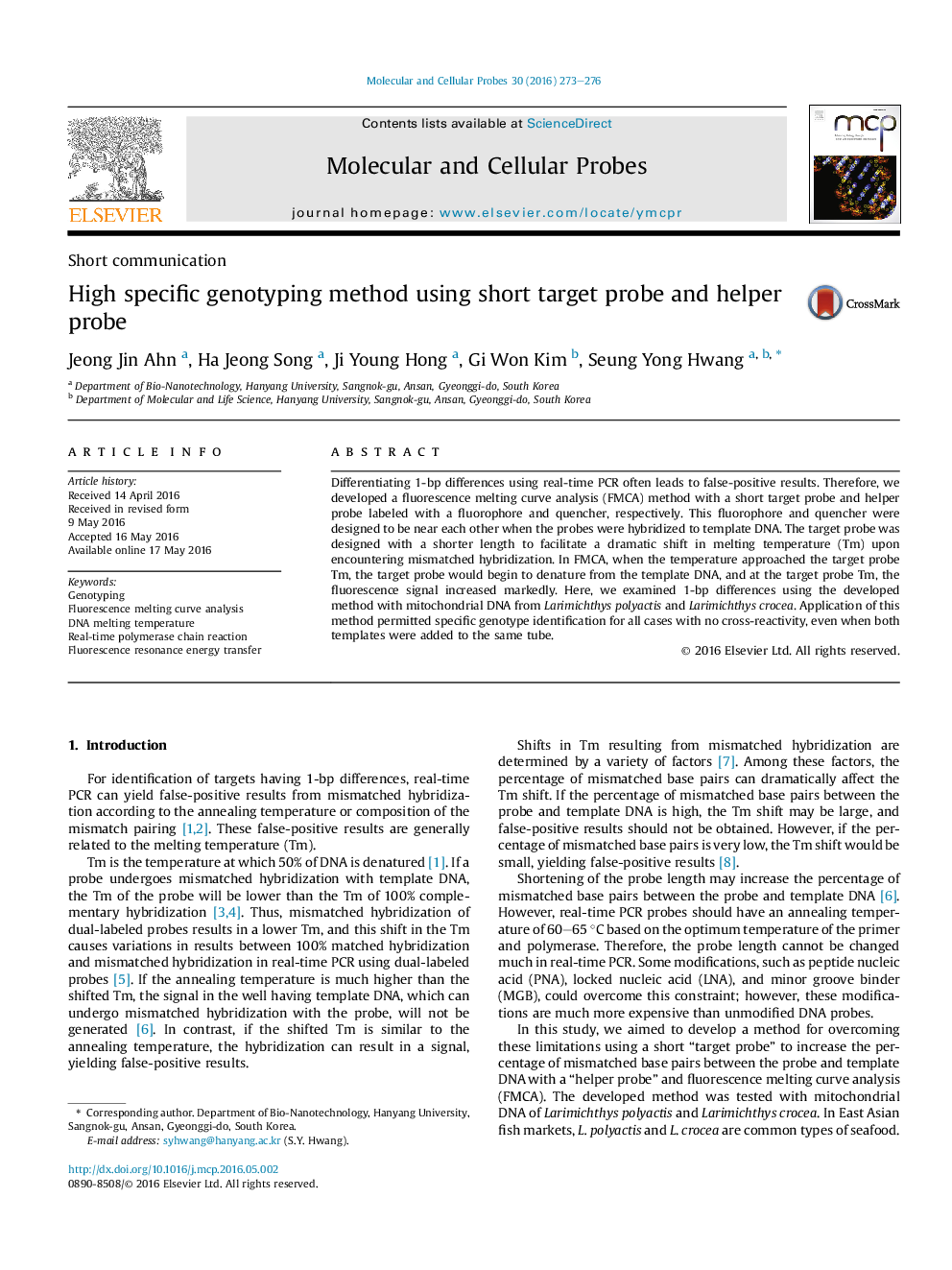| کد مقاله | کد نشریه | سال انتشار | مقاله انگلیسی | نسخه تمام متن |
|---|---|---|---|---|
| 5534521 | 1402183 | 2016 | 4 صفحه PDF | دانلود رایگان |

- We developed a highly specific genotyping method using a short target probe with a low Tm and fluorescence melting curve analysis.
- The developed method identified Larimichthys polyactis and Larimichthys crocea using 1-bp differences.
- The low Tm of the short target probe permitted identification of 1-bp differences for all cases with no cross-reactivity.
Differentiating 1-bp differences using real-time PCR often leads to false-positive results. Therefore, we developed a fluorescence melting curve analysis (FMCA) method with a short target probe and helper probe labeled with a fluorophore and quencher, respectively. This fluorophore and quencher were designed to be near each other when the probes were hybridized to template DNA. The target probe was designed with a shorter length to facilitate a dramatic shift in melting temperature (Tm) upon encountering mismatched hybridization. In FMCA, when the temperature approached the target probe Tm, the target probe would begin to denature from the template DNA, and at the target probe Tm, the fluorescence signal increased markedly. Here, we examined 1-bp differences using the developed method with mitochondrial DNA from Larimichthys polyactis and Larimichthys crocea. Application of this method permitted specific genotype identification for all cases with no cross-reactivity, even when both templates were added to the same tube.
Journal: Molecular and Cellular Probes - Volume 30, Issue 4, August 2016, Pages 273-276